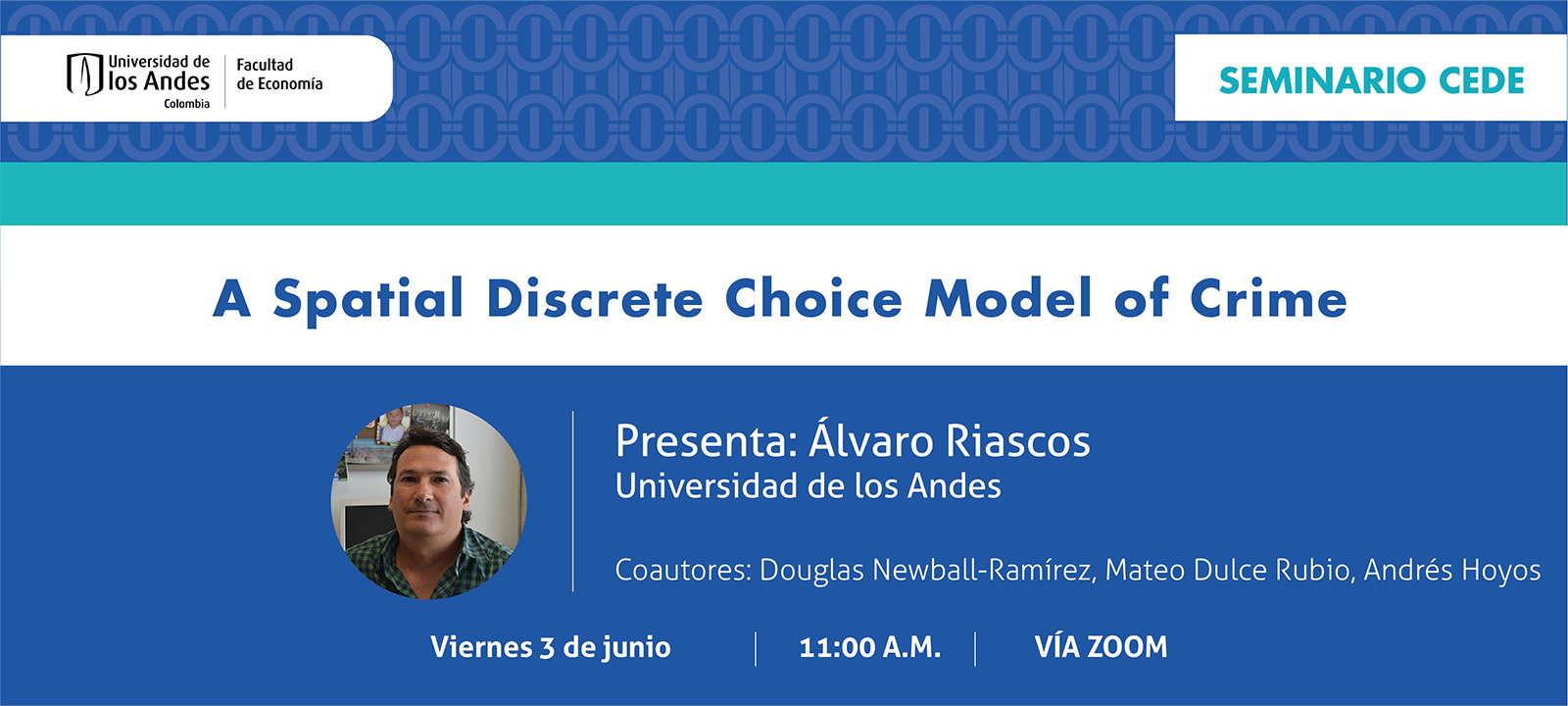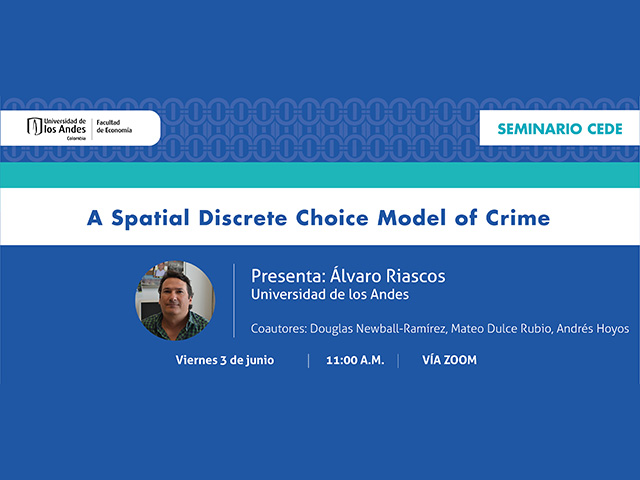Seminario CEDE - Álvaro Riascos

Overall, the causal relationship between proactive policing (in the sense of more time of police presence) and the incidence of crime is not yet well established. In this work, we use a unique experimental data set tailored to identify the causal impact of police patrolling on crime. Using this data, set we exploit an identification strategy based on a random utility model of crime location choice. The model allows us to identify agents’ utilities from observable data. We were able to estimate own-and cross-elasticities of crime to patrolling time and we were able to evaluate alternative patrolling strategies (i.e, interventions or policy scenarios). To the extent of our knowledge, both the identification of elasticities and the counterfactual analysis are novel features in this literature. Our estimates show that 1% more time patrolling reduces crime an average of 0.19%. Cross-price elasticities show little support to negative spillover effects of police patrolling. We also evaluate four different patrolling time allocation strategies without increasing the total police time available. Our results show that allocating police time according to crime incidence and the elasticities of each quadrant, could potentially reduce violent crime by 4.13% and property crime by 6%.

